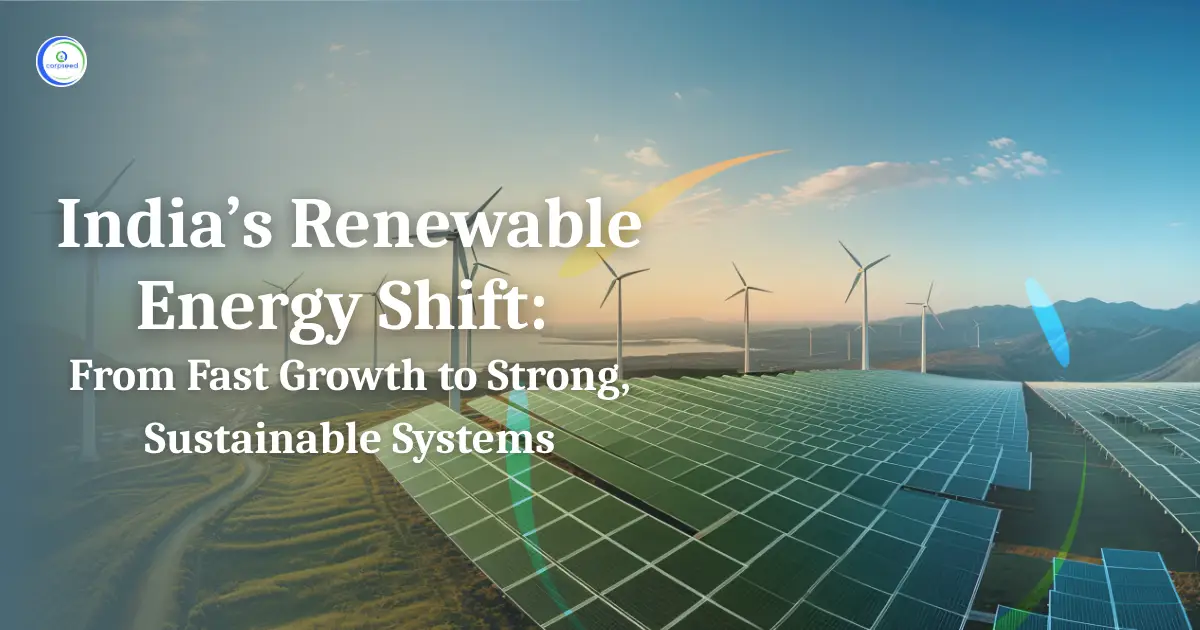India’s renewable energy journey is now in a crucial phase. After years of quick expansion, the focus is shifting from simply increasing capacity to strengthening systems. The Ministry of New and Renewable Energy (MNRE) has laid out a clear plan to make sure the nation’s clean energy development is not only fast but also solid, dependable, and future-ready.
Table of Contents
The goal is straightforward yet impactful: to build a renewable framework that supports India’s 500 GW non-fossil fuel target by 2030. This is not just a change in numbers but a shift in thinking, moving from expansion to durability, from speed to resilience.
From Quantity to Quality
In the past decade, India's renewable energy capacity has grown from under 35 GW in 2014 to more than 197 GW today (excluding large hydro). This is one of the fastest growth rates worldwide. However, MNRE believes it is time to look beyond megawatts and focus on what is truly important: stability, integration, and quality.
Rather than simply building more projects, the sector's focus is now on ensuring that every unit of clean power created can be absorbed efficiently into the grid. This means enhancing grid integration, enhancing energy storage, and promoting hybrid renewable models. The enforcement of the Approved List of Models and Manufacturers (ALMM) helps maintain quality and reliability by supporting trusted technology providers.
This change is not a slowdown, it is an essential evolution to make sure India’s renewable growth remains strong, steady, and ready for long-term reliability.
Even with global challenges like changing prices, supply chain problems, and tighter financing, India continues to add 15-25 GW of new renewable capacity each year. This shows that the momentum is still strong.
Policy Shift: From Expansion to Integration
In the past two years, India has diverted its focus to energy storage and round-the-clock green power, making renewable energy more reliable and easily dispatchable.
Battery Energy Storage Systems (BESS) are being added at grid and project levels, while local manufacturing is increasing, backed by incentives such as the Production-Linked Incentive (PLI).
The government’s INR 2.4 lakh crore Transmission Plan aims to connect renewable-rich states with demand centers, unlocking over 200 GW of clean energy potential.
Recent updates to CERC’s network access rules allow flexible sharing of transmission corridors among solar, wind, and storage projects. This improves the use of infrastructure and minimizes grid congestion.
Strengthening India’s Renewable Core
India’s renewable energy sector is moving from rapid expansion to robust system integration. More than 40 GW of projects are in advanced stages of safeguarding power purchase agreements and transmission links, while both state and private players plan to add around 15 GW of new capacity this year. With some of the lowest renewable tariffs in the world, India continues to attract investors, confirming affordable and competitive clean power growth.
The Ministry of New and Renewable Energy (MNRE) now aims to create a connected renewable ecosystem. Initiatives like Virtual Power Purchase Agreements (VPPAs), green certificates, and improved grid networks are enhancing market participation and reliability. Supported by local manufacturing and transmission reforms, these efforts are guiding India’s shift from rapid growth to a stable, sustainable, and resilient clean energy future for a Viksit Bharat.
India’s renewable revolution is transforming, shifting from rapid capacity additions to building sustainable systems. This phase of integration and stability will ensure that when the next surge comes, it will be robust, smarter, and truly sustainable for a Viksit Bharat.
This portion of the site is for informational purposes only. The content is not legal advice. The statements and opinions are the expression of author, not corpseed, and have not been evaluated by corpseed for accuracy, completeness, or changes in the law.

